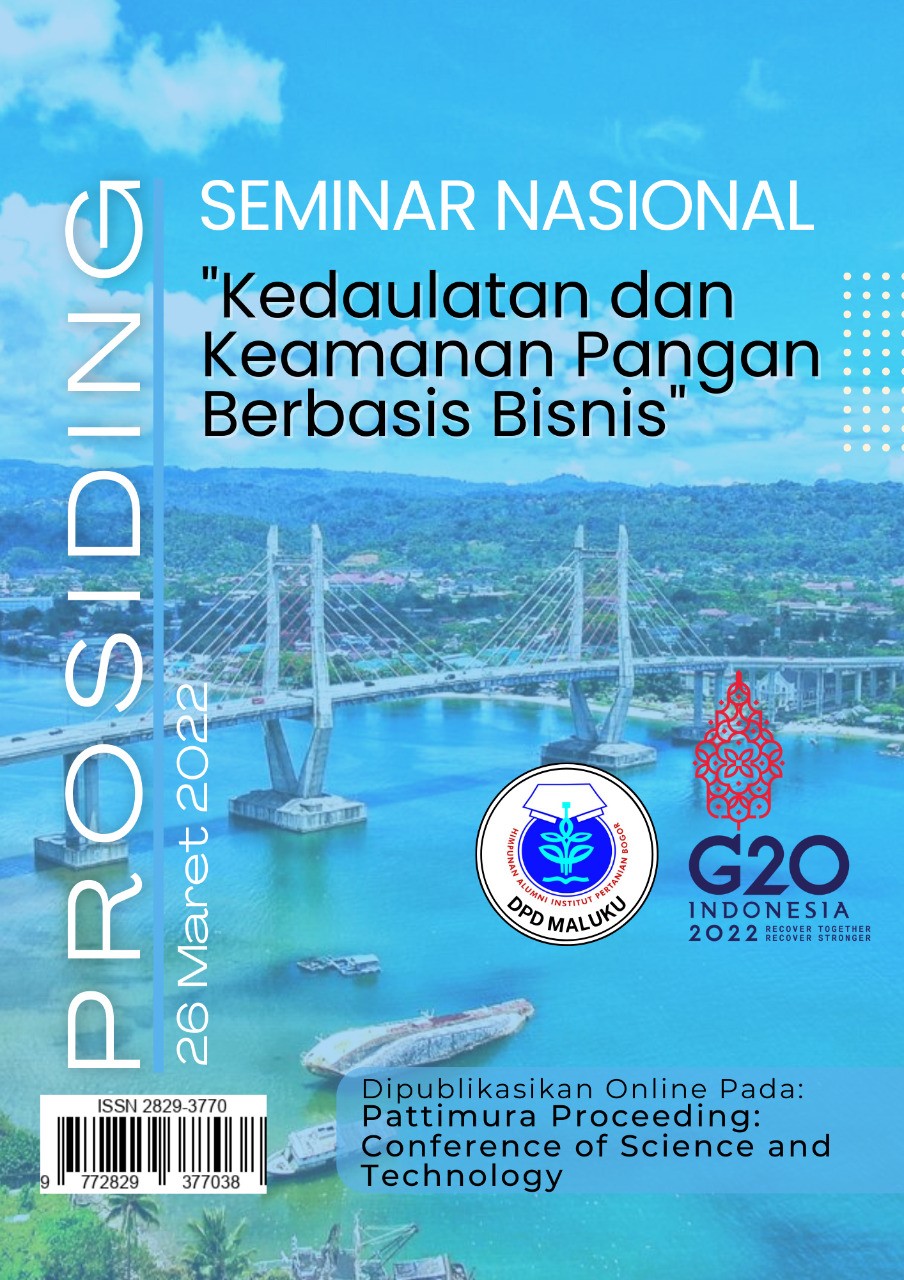HEMATOLOGI IKAN NILA (Oreochromis niloticus) DARI WADUK OLIGOTROFIK DAN EUTROFIK
Hematology of Nile Tilapia (Oreochromis niloticus) from Oligotrophic and Eutrophic Reservoirs
Abstract
Hematological observations of Nile tilapia (Oreochromis niloticus) were carried out in oligotrophic waters (Wonorejo Reservoir) in July-August 2018 and eutrophic waters (Selorejo Reservoir) in March-April 2021. Both reservoirs are located in East Java, Indonesia. The number of fish samples from the Wonorejo Reservoir was 80 fish, while the sample from the Selorejo Reservoir was 108 fish. Sampling was carried out 3 times every 2 weeks. The erythrocyte, hemoglobin, and hematocrit levels of tilapia from Selorejo Reservoir (eutrophic waters) were lower than those from oligotrophic waters. The condition of low levels of erythrocytes, hemoglobin, and hematocrit indicates that fish are under stress. The leukocytes and micronuclei were higher in fish from eutrophic waters which were thought to be less healthy. The hematology of Nile tilapia from the Wonorejo Reservoir (oligotrophic) was in good condition, while the Nile tilapia from the Selorejo Reservoir (eutrophic) was not in good condition, which was thought to be due to the eutrophic condition of the waters there was an imbalance of physico-chemical water, so that the health of the fish was disturbed
Downloads
References
Arfiati, D., Puspitasari, A. W., Retnasari, D. P., & Widiastuti, I. M. (2019). Status tropik dan isi lambung ikan nila (Oreochromis niloticus) dari Waduk Wonorejo, Tulungagung, Jawa Timur. Journal of Fisheries and Marine Research, 3(2), 166– 171.
Arfiati, D., Saputri, N. A., Styaningrum, N., Widyastami, A., Dina, K. F., Lailiyah, S., Pratiwi, R. K., & Inayah, Z. N. (2021). The Biological Aspects Comparison of Nila Tilapia (Oreochromis niloticus) on The Eutrophic and Oligotrophic Reservoir from Indonesia. Research Journal of Life Science, 8(1), 1-6.
Astari, T. R., Pramana, A., & Syaifudin, M. (2015). Efek Paparan Sinar-X Terhadap Frekuensi Mikronukleus Sel Limfosit Dan Pemanfaatannya Untuk Pengembangan Dosimeter Biologi. Jurnal Biotropika, 3(2), 65–69.
Feliatra. (2018). Probiotik: Suatu tinjauan keilmuan baru bagi pakan budidaya perikanan, edisi pertama. Jakarta: Prenada media.
Hardi, E. H., Harris, E., Lusiastuti, A. M., Perairan, L. M., Mulawarman, U., & Timur, K. (2012). Karakteristik dan Patogenisitas Streptococcus agalactiae Tipe β-hemolitik dan Non-hemolitik pada Ikan Nila. Jurnal Veteriner, 12(2), 152-164–164.
Hastuti, S., & Subandiyono, S. (2015). Kondisi kesehatan ikan lele dumbo (Clarias gariepinus, Burch) yang dipelihara dengan teknologi biofloc. Jurnal Saintek Perikanan, 10(2), 74-79.
Jennerjahn, T. C., and Klöpper, S. (2013). Does high silicate supply control phytoplankton composition and particulate organic matter formation in two eutrophic reservoirs in the brantas River Catchment, Java, Indonesia?. Asian Journal of Water, Environment and Pollution, 10(1): 41–53.
Peraturan Pemerintah Republik Indonesia nomor 22 tahun 2021 tentang Penyelenggaraan Perlindungan dan Pengelolaan Lingkungan Hidup.
Prayogo, N. A., Atik, H., Asrul, S. S., & Yunasfi. (2016). Uji toksisitas letal dan subletal logam berat Merkuri (Hg) Terhadap Ikan Nilem (Osteochilus hasselti). OmniAkuatika, 12(1), 86–94.
Putra, A. N. (2015). Gambaran darah ikan patin (Pangasius sp.) dengan penambahan prebiotik pada pakan. Jurnal Ilmu Pertanian Dan Perikanan, 4(1), 63–69.
Roberts, R.J. 1978. The Bacteriology of Teleostei in Fish Pathology. Ballier Tindall London. 205-308 hlm.
Sayekti, R., Yuliani, E., Bisri, M., Juwono, P., Prasetyorini, L., Sonia, F., & Putri, A. (2015). Studi evaluasi kualitas dan status trofik air Waduk Selorejo akibat erupsi gunung kelud untuk budidaya perikanan. Jurnal Teknik Pengairan, 6(1), 133–145.
Setijaningsih, L., & Umar, C. (2015). Pengaruh lama retensi air terhadap pertumbuhan ikan nila (Oreochromis niloticus) pada budidaya sistem akuaponik dengan tanaman kangkung. Berita Biologi, 14(3), 267-275.
Tyastuti, E. M., Okid P. A., dan Sunarto. 2016. Ekogenotoksisitas limbah cair batik dan efek antimutagenik lemna minor terhadap eritrosit ikan nila (Oreochromis niloticus). Bioeksperimen. 2(2), 119 – 129.
Yanto, H., Hasan, H., & Sunarto. (2015). Studi hematologi untuk diagnosa penyakit ikan secara dini di di sentra produksi budidaya ikan air tawar Sungai Kapuas Kota Pontianak. Jurnal Akuatika Indonesia, 6(1), 11–20.
Yanuhar, U., Raharjo, D. K. W. P., Caesar, N. R., & Junirahma, N. S. (2021) Hematology response of catfish (Clarias sp.) as an indicator pf fish health in Tuban Regency. IOP Conference Series: Earth and Enviromental Science, 718(1).
Zubaidah, A., Faidah, K. R., & Samsundari, S. (2018). Effectiveness of Strychnos ligustrina Bl. extract as feed supplementation to increase immune system of Nile Tilapia (Oreochromis niloticus) wich againts Streptococcus agalactiae. Indonesian Journal of Tropical Aquatic, 1(1), 1-8.
Copyright (c) 2022 Pattimura Proceeding: Conference of Science and Technology

This work is licensed under a Creative Commons Attribution-NonCommercial-ShareAlike 4.0 International License.












